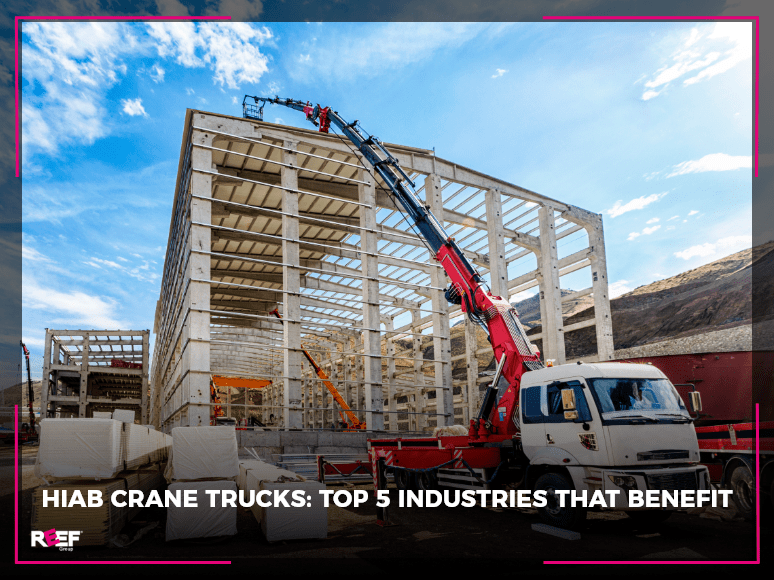How Does a Tilt Tray Truck Deliver a Moving Container

What Does the Future Hold for Australia’s Transport Sector
March 30, 2021
AUSTRALIAN ROAD TRAINS – KINGS OF THE ROAD IN THE OUTBACK OF AUSTRALIA
May 31, 2021If you ever require to move interstate using our container removals service, you will notice that our company will deliver your container via a tilt tray truck. Yet you may not be familiar with what type of truck will show up to your home delivering your moving container. Within this article, you will be able to understand what to expect during your moving experience with Reef Group, as well as how a tilt tray truck operates.
When you choose to undertake an interstate move using one of our removalist specialist moving containers, there are 5 important steps of transport required in every move.
- An empty moving container will be delivered to your home via a tilt tray truck.
- The loaded container is picked up from your home and transported to the rail terminal.
- The container travels interstate by rail.
- The loaded container is transferred from the rail terminal to your new home.
- The empty container is then picked up from your house after unloading.
Tilt tray truck vs Sideloading truck
By default, Reef Group uses tilt tray trucks for the majority of our customers undertaking a residential move. Tilt tray trucks are most suited to delivering a moving container to a driveway, which is the most common delivery location a container is fixed for our clients who are moving house. Side loading trucks are sometimes used when a tilt tray truck is unable to place a container in a restricted or limited space. Side loader delivery is useful when the shipping container is loaded to or from the delivery address. The truck driver drives to the side of where the container will be placed, it is then lifted onto the ground from the driver’s side and lands parallel. Yet these are usually a more costly option for our customers which we prefer to avoid if not required.
How a tilt-tray truck loads and unloads a shipping container
As the name suggests, a tilt tray truck has a sliding tray on the rear which tilts to the ground to enable a shipping container to slide on and off.
We supply tilt tray trucks to transport our 20ft HC or GP moving containers for 95% of all residential moves.
On the underpart of the tray, there is a hydraulic system that tilts the tray and slides the tray back and forth on the truck. At the front of the tray, there is a winch which is attached to the shipping container. The winch pulls the container (or lowers it) from the floor to the tray as the truck drives slowly underneath (or out from under) the container.
Can the contents of the shipping container move when loaded or unloaded with a tilt tray truck?
The tilt tray truck moves the shipping container on and off the tray slowly and delicately yet as the container is tilted, gravity will cause any unsecured items to shift inside the container. The success of a self-pack shipping container move comes down to the manner in which you pack the container. It is essential that all items are secured into place and our removalist specialist shipping containers (in most cases) come equipped with tie rails on the interior walls of the container for you to tie your furniture too. There are also weighty lugs at the bottom and top of the container in order to help secure large, heavy items.
Our website has many tools to help demonstrate to you how to correctly load a container to minimise the movement of your items during loading/unloading as well as transit. Here are some useful links that can help demonstrate the correct way to load a moving container:
✓ How to pack – a guide to packing tricky/difficult items in a moving container
✓ DIY Guide – the ultimate guide to loading your moving container
✓ How to pack specialty items in your moving container

How to ensure the contents of a shipping container will stay in place?
Your best friends when loading a shipping container with household furniture will be furniture blankets and rope (or tie-down straps) – these are both easily available at most hardware stores for a usually low cost.
If you stick to a few basic common-sense rules when loading the container, you should not have any issues.
** Make sure to tie all large and heavy items of furniture to the tie rails on the inside of the container **
** Use plastic wrap or furniture blankets to wrap each item of furniture to make sure any movable parts are held in place **
Check the weight is distributed evenly throughout the shipping container
You must allocate the heavy items you are moving, evenly within the shipping container. The best course of action is to make a plan with the largest and densest items of furniture so you know where these will be placed. Aim to put these items evenly around the walls of the container so they can be tied directly to the wall with rope or strapping. The smaller, lighter items can be fixed in between to help fill in the gaps. If you consider loading the container as if you were playing a game of Tetris then you will do well. If the container is filled so that there is a minimal amount of empty space, this will also minimise the chances of items moving during transit.



